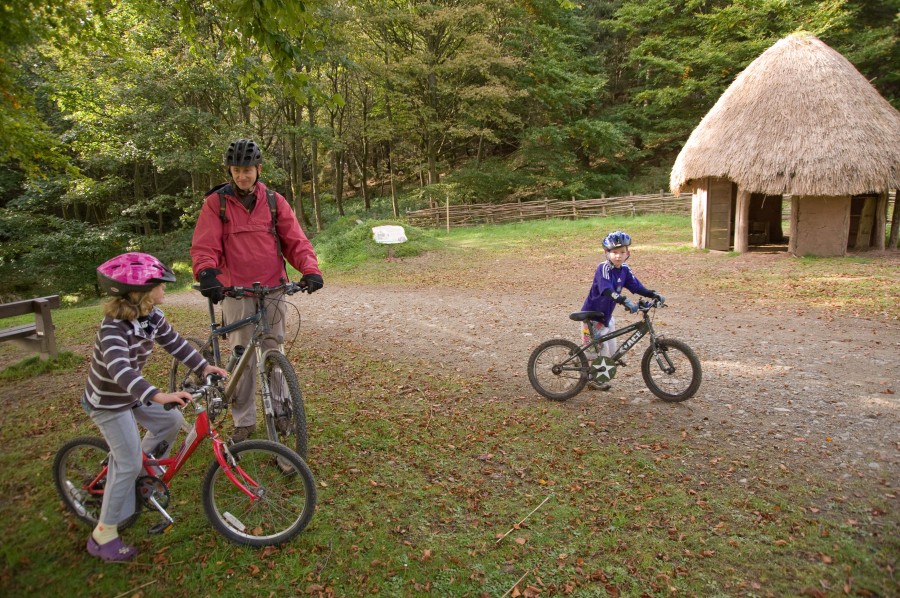Summary
This research is the first to value the mental health benefits associated with the UK’s woodlands. It does this in terms of the costs avoided due to the reduced prevalence of mental illnesses. The annual mental health benefits associated with visits to the UK’s woodlands are estimated to be £185 million (at 2020 prices). This research will be of use to policymakers in making the case for continued investment in and expansion of the UK’s woodlands and treescapes, and the provision of public access to ensure people reap the benefits of those woodlands.
Research Objectives
- Investigate and compile information for the UK on avoided costs for prevention and cure of the different types of mental illness impacts and for different metrics (NHS cost savings, working days lost, etc.).
- Derive estimates of the magnitude of UK natural capital values for the mental health benefits provided by woodlands based upon up-scaling and combining existing evidence on mental illness impacts and avoided costs.
- Provide recommendations on deriving more robust estimates through strengthening the evidence base and refining approach
Findings and recommendations
- The research is the first attempt to estimate the mental health benefits associated with the UK’s woodlands.
- It uses an avoided costs approach to valuing the benefits of the reduced prevalence of mental illness.
- The values are based on evidence of the reduced incidence of depression and anxiety resulting from regular visits to nature.
- The avoided costs are based upon the average annual costs to society of living with depression or anxiety.
- These comprise costs associated with treatment, including visits to GPs, drug prescriptions, inpatient care and social services.
- They also include employment-related costs based on estimates of the number of working days lost due to mental health issues.
- Use of an avoided costs approach avoids double counting, which could occur when aggregating mental health values with values for the other benefits of woodlands e.g. recreation or physical health benefits.
- The annual mental health benefits associated with visits to the UK’s woodlands are estimated to be £185 million (at 2020 prices). Country-level values based on population size are £141 million for England, £26 million for Scotland, £13 million for Wales and £6 million for Northern Ireland.
- UK natural capital values are estimated to be around £11 billion.
Pathways explored
- The research explores several approaches to valuing the mental health benefits of woodlands. These are summarised in the table below. Of these, valuation based on the evidence of regular visits to natural environments (visits to nature) and reduced incidence of depression and anxiety is considered to be the most robust of the pathways examined.
Table 1. Summary of the research used within each of the pathways.
| Pathway | Description |
| Visits to Nature | Shanahan et al. (2016) reported that visits to outdoor greenspace of 30 minutes or more per week is associated with a reduction in the prevalence of depression in the population by 7%. |
| Physical Exercise | Findings from the MOVES tool developed by Sport England (2016) suggest that on average, adults in the UK can reduce their incidence of depression by 0.67% by walking two hours a week. |
| Antidepressants and Street Trees | Taylor et al. (2015) reported an association suggesting a decrease of 1.18 prescriptions per thousand population per unit increase in trees per km of street in London. |
| Proportion of Greenspace | White et al. (2013) found better mental health to be associated with a greater proportion of greenspace in an area.
Vivid economics, (2017) adopted these findings to estimate the avoided mental health spending in London, reporting an estimated mental health value of greenspace in London of £370 million. |
| Forest bathing/forest therapy | Not quantified due to lack of data |

- Proximity-based approaches (‘Proportion of greenspace’) based upon associations between greater residential greenspace and lower mental ill health, as well as between higher street tree density and reduced antidepressant prescriptions are examined.
- Visit and proximity-based values can be combined, provided that they do not overlap.
- In view of the conservative approach to valuing the mental health benefits of street trees in terms of reduced antidepressant prescription costs alone, adding this value to that for visits to woodlands is considered feasible.
- The aggregate value is estimated to be £202 million (at 2020 prices). At country level (rounded to the nearest million), these values are £155 million for England, £27 million for Scotland, £13 million for Wales and £6 million for Northern Ireland.
An underestimate of the true value?
- The reported values are likely to be underestimates because they are based upon conservative estimates of the costs of mental health issues, while the number of regular woodland visitors is based upon year-round visiting habits.
- Mental health benefits for people who visit woodlands during the summer, but not during winter, are not currently accounted for using this approach.
- Mental health benefits received by those who would not have developed a specific mental health condition were it not for the woodlands, but nonetheless benefit are not accounted for. Akin to the invisible part of an iceberg below the water, these mental of woodlands may potentially be substantially larger than those quantified using an avoided cost approach.
- During the COVID-19 pandemic, the prevalence of mental illness has also increased and access to trees, woods, forests, and other natural environments including urban parks and green spaces has become even more important for individuals to support and maintain their wellbeing.
Further research exploring links between improvements in mental health or reductions in mental distress and visits to the UK’s woodlands would significantly improve the evidence base and provide more robust estimates going forward.
Our Involvement
Forest Research led the project in collaboration with an independent expert (‘critical friend’) – a public health economist.

